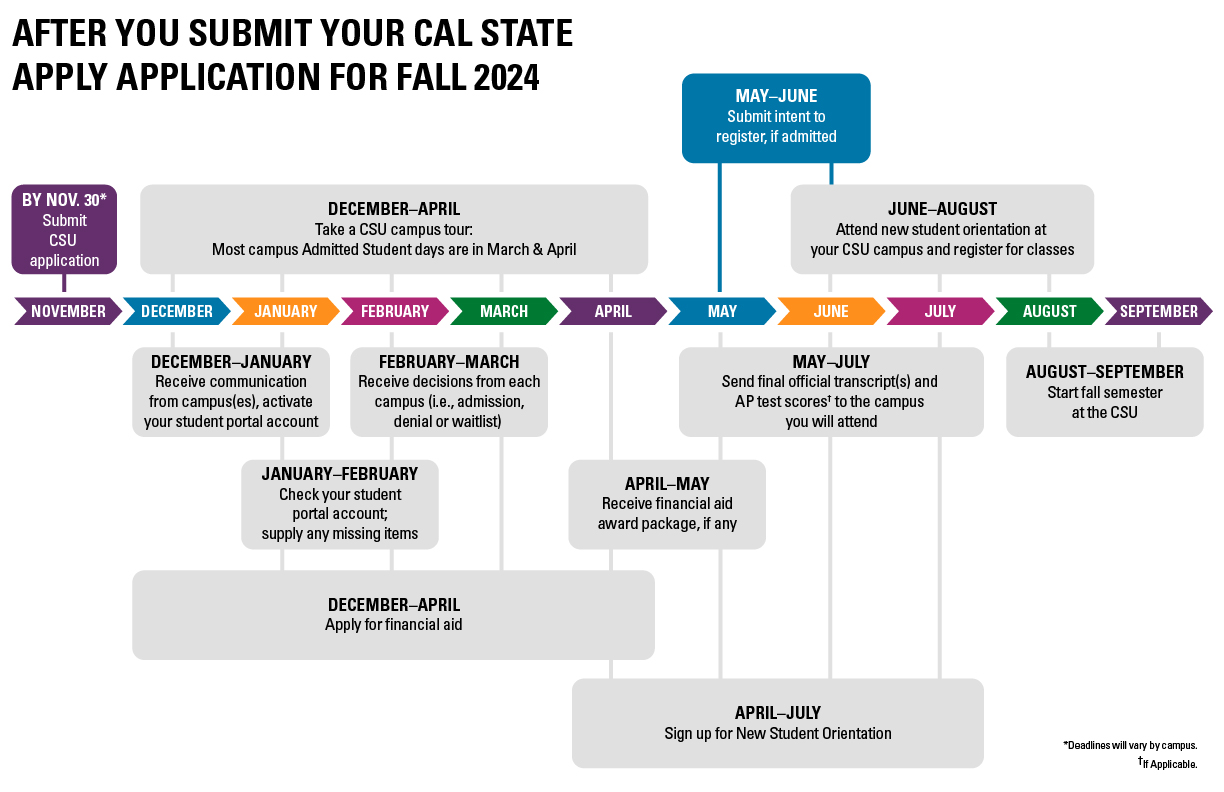The CSU's application season for fall admission may be over for the majority of campuses, but for the thousands of applicants to the system's 23 campuses the next few months should be more than simply a waiting game.
April Grommo, assistant vice chancellor for Enrollment Management Services at the CSU Chancellor's Office, says students should be proactive and start engaging with all campuses they've applied to now. (See "After You Submit Your CSU Application" at the end of this article for an overview of the post-application timeline.)
Check Your Email Regularly
Email is the primary way campuses communicate with students after they submit their applications. Make sure you check your email regularly. The email address you used to create your Cal State Apply account is the email that will receive communications and next steps for all campuses you applied to. If your email address changes, notify those campuses immediately.
Communicating Through the Student Portal
After you've submitted your application to one or more CSU campuses, the first thing you'll receive is an acknowledgment e-mail or letter from each of them.
In that acknowledgment, the campus will let you know how to set up your online student portal at that campus. "There is not a single place you go for all communications and next steps [for all CSU campuses]," says Grommo. Once you've set up your unique student portal account, that's what the campus will use to communicate with you about everything to do with your application.
Then, around January and February, you may get a notification in your student portal about any missing items, such as transcripts or supplemental application documents.
Through March—depending on how quick each campus is—you should receive your admission decision (meaning whether you've been admitted, denied admission, or waitlisted for admission).
What Happens After You Get Accepted
If you've been accepted, you must submit your "intent to register" by the campus deadline, along with a deposit. Again, each campus will let you know how to do this via your portal account. Many campuses also require you to sign up for a new student orientation by a specific date, as well.
Eventually, you'll be asked to submit your final high school transcript (if you're a first-time freshman) or your community college transcript(s) if you're a transfer student.
The student portal will also be used to share other information, such as details about orientation, housing or the Supportive Pathways for First-Year Students Program (formerly the Early Start Program).
Incoming first-time freshmen and transfer students should also submit any AP test scores to the CSU campus they'll be attending in the fall. First-time freshmen can also submit any SAT or ACT test scores if available. These scores can be used to assist in placing you in the proper college-level English and math courses.
First-time freshmen should visit csustudentsuccess.org for more information on first-year placement in General Education (GE) English and math courses and the Supportive Pathways for First-Year Students Program.
Don't Forget to Apply for Financial Aid
The Free Application for Federal Student Aid (FAFSA) and the California DREAM Act Application (CADAA) opened on December 31, 2023. The state deadline to file these applications is April 2, 2024; however, the CSU encourages students to submit by March 2, 2024. Beginning in 2023, students will see major changes to the FAFSA through the FAFSA Simplification Act.
You'll receive your financial aid award package, if any, through your student portal. If you've been accepted to more than one campus, you'll get a comparative sheet that shows your award by campus. Keep in mind that about 80% of students at the California State University receive some type of financial aid.
Learn more about the Better FAFSA and options for funding a CSU education.
Getting to Know Your Campus
One of the most important parts of the post-application season is the chance to learn more about the campus(es) you've been accepted to. "Students need to learn all they can about their desired campus so they can get off to a good start," says Grommo.
To help you feel that you've found the school that's right for you, try to visit and tour all the campuses you're considering, ask questions, explore the departments you're interested in, and talk to current students, faculty and staff.
Students who have been accepted to multiple campuses should also compare academic programs to see which is best suited for their interests and career goals.
If you're undecided about your major, Grommo recommends getting advice early on or enrolling in a learning community or class for students who are undecided about their majors.
"It's okay to be undecided," she says. "But be proactive. Assess your interests. Go to the career center. See what options are available to you."
Every campus has its strengths, but each also has characteristics that may not align with your preferences—whether that's location, size or other important factors. It is essential to get a realistic appraisal in order to make the decision that's best for you.
"It's important to listen to yourself and find the campus that has what you want, but also challenges you with new experiences and opportunities," says Grommo. "Don't be influenced by what everyone else is doing. It's about you and what you want."
Check out the overview of the post-application timeline below:
